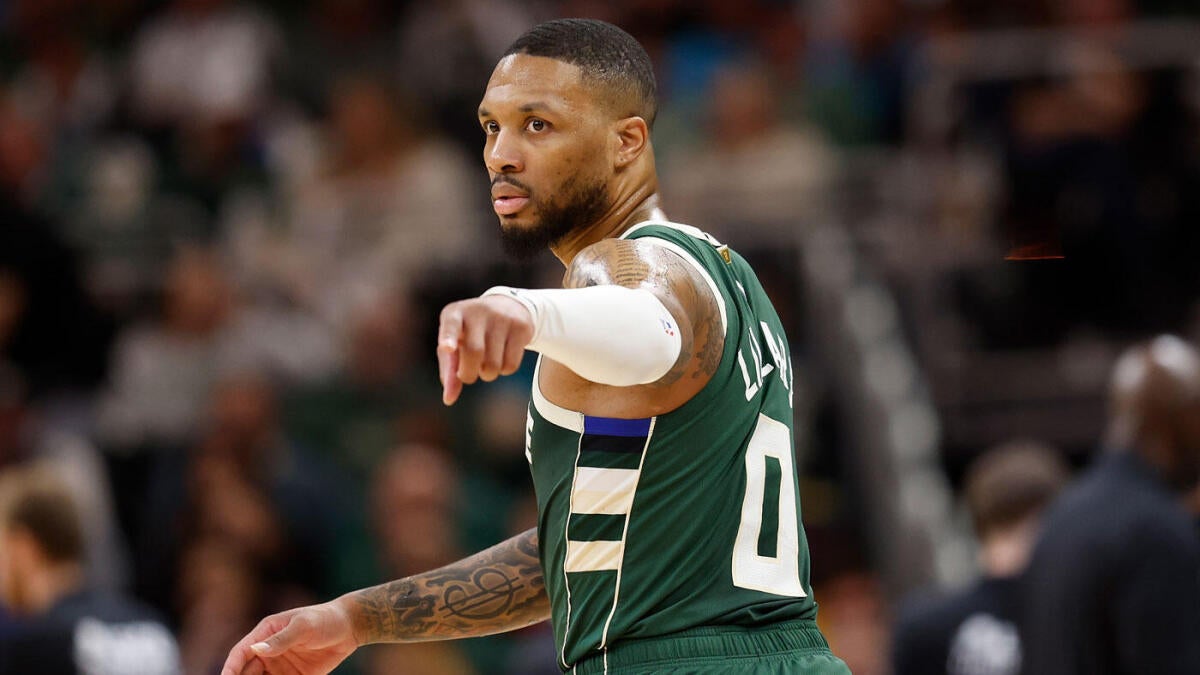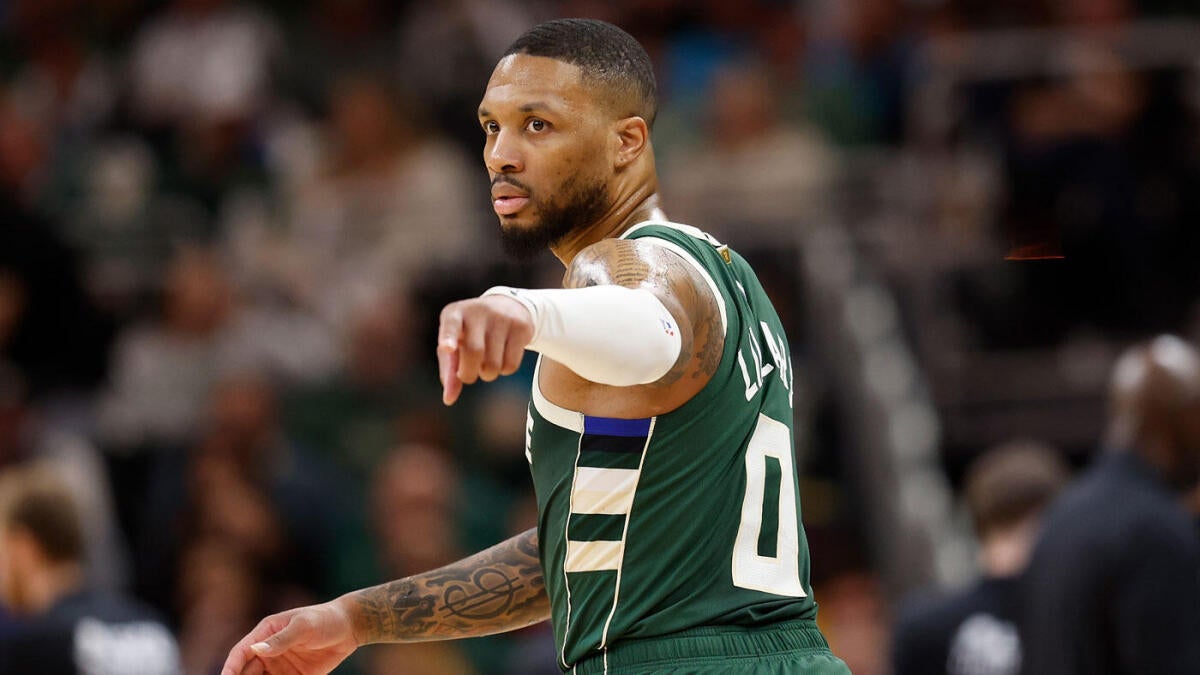The NBA offseason is often a period of rapid change, marked by blockbuster trades, high-profile free-agent signings, and unexpected roster moves. However, few developments have been as sudden or as consequential as Damian Lillard’s departure from the Milwaukee Bucks. Just months after being acquired in a high-profile trade designed to bolster the Bucks’ championship aspirations, Lillard finds himself a free agent, creating a ripple effect that extends across the league. This shift raises critical questions about team dynamics, player fit, and the broader implications for the NBA’s competitive balance.
A Sudden Shift in Milwaukee
The Bucks’ decision to waive Lillard, stretching his remaining $113 million contract, was both strategic and abrupt. The move was primarily driven by the need to create cap space for center Myles Turner, whom the Bucks signed to a four-year, $107 million contract. While Lillard was initially brought in to complement Giannis Antetokounmpo and elevate the team’s championship hopes, the partnership never fully materialized. Reports suggest that Antetokounmpo himself was displeased with the decision, highlighting the delicate nature of team chemistry in the NBA.
The Bucks’ decision underscores a harsh reality in professional sports: even All-Star-caliber players can be moved if they do not align with a team’s long-term vision. The Bucks are betting that Turner’s defensive presence and floor-spacing abilities will better complement Antetokounmpo’s game than Lillard’s offensive firepower. However, this gamble comes with significant risks. If Turner fails to deliver or the Bucks struggle offensively without Lillard, the franchise could face backlash for prioritizing fit over star power.
Open to Offers: Lillard’s Mindset
Despite the abrupt nature of his free agency, Lillard appears to be approaching the situation with a measured and strategic mindset. According to NBA insider Chris Haynes, Lillard is “open to signing with a team this offseason under the right terms and conditions” but is “in no rush” to make a decision. This suggests that Lillard is prioritizing fit, both on and off the court, and is willing to be patient in finding the ideal situation.
Lillard’s decision will likely hinge on several factors, including the team’s championship aspirations, the fit within the roster, and the cultural environment. He seeks a franchise where he can contribute meaningfully, compete for titles, and thrive within a supportive system. His experience in Milwaukee may have reinforced the importance of these factors, as his tenure with the Bucks was cut short despite his star status.
The Suitors: Who’s in the Mix?
With Lillard now available, several teams are expected to express interest in acquiring the All-Star guard. Each potential suitor offers a unique set of circumstances and potential benefits for Lillard, making his decision a complex one. Among the teams reportedly interested are:
Golden State Warriors: A return to the Bay Area could be appealing for Lillard, who spent his entire career with the Portland Trail Blazers before being traded to Milwaukee. The Warriors, despite their recent struggles, possess a championship pedigree and a core of proven veterans in Stephen Curry, Chris Paul, and Draymond Green. Adding Lillard could provide the offensive firepower they need to return to contender status. However, questions remain about Lillard’s fit within the Warriors’ system and whether they are willing to commit the necessary resources to acquire him.
Los Angeles Lakers: The allure of playing alongside LeBron James and Anthony Davis in the bright lights of Los Angeles is undeniable. The Lakers are constantly in search of talent to bolster their championship aspirations. Lillard’s scoring prowess and playmaking ability would undoubtedly complement James and Davis, creating a formidable trio. The Lakers would need to get creative with their cap situation to make it work, however.
New York Knicks: The Knicks have been steadily building a competitive team under coach Tom Thibodeau. Adding a player of Lillard’s caliber would instantly elevate them into the upper echelon of the Eastern Conference. Lillard would provide the Knicks with a much-needed offensive spark and a proven closer in tight games. The Knicks also have the assets to potentially make a compelling offer.
Contractual Nuances and Restrictions
Lillard’s free agency is further complicated by the contractual nuances surrounding his waived contract. Because the Bucks stretched his remaining salary, any team signing Lillard would be limited in what they could offer, and he would be unable to sign for the veteran minimum. Lillard’s “non-Bird rights” also restrict potential raises a new team could offer without utilizing salary cap space. This means teams will need to carefully evaluate their cap situation and be creative in structuring a contract that is both appealing to Lillard and financially feasible.
These restrictions could limit the number of teams capable of signing Lillard, as many franchises may not have the necessary cap space or flexibility to accommodate his salary. This could force Lillard to consider shorter-term deals or accept less than he might have otherwise received in a more traditional free-agency scenario.
Impact on the League
Lillard’s free agency has significant implications for the balance of power in the NBA. His decision will not only shape the fortunes of his chosen team but will also impact the strategies of other contenders. The teams that miss out on Lillard may be forced to pursue alternative options, potentially leading to further player movement and roster reshuffling. The Lillard situation also underscores the importance of team chemistry and fit. Even the most talented players can struggle to thrive in situations where the team dynamics are not conducive to success.
The Bucks’ decision to prioritize fit over star power could set a precedent for other franchises, encouraging them to reevaluate their roster construction strategies. However, it also highlights the risks involved in such moves. If the Bucks’ gamble fails, it could deter other teams from making similar decisions in the future.
The Ripple Effect on the Bucks
The Bucks’ decision to waive Lillard and sign Turner represents a significant gamble. While Turner provides rim protection and floor spacing, he does not possess the same offensive firepower or star power as Lillard. The Bucks are betting that Turner’s fit alongside Antetokounmpo and their existing core will ultimately lead to greater success than the Lillard experiment. Only time will tell if this calculated risk will pay off.
If the Bucks struggle offensively without Lillard, they may face criticism for prioritizing defense over scoring. Conversely, if Turner proves to be a valuable addition and the team succeeds, the Bucks’ decision could be vindicated. The outcome of this gamble will have lasting implications for the franchise’s future.
A Calculated Risk
The Bucks’ willingness to part ways with a player of Lillard’s caliber demonstrates a bold approach to roster construction. By prioritizing fit and team chemistry over individual star power, they are sending a clear message that they are committed to building a sustainable championship contender. However, they are also taking a significant risk. If Turner fails to live up to expectations or if the team struggles to find offensive consistency without Lillard, the Bucks could face significant criticism for their decision.
This situation also raises questions about the role of veteran leadership in the NBA. Lillard’s experience and clutch performances have been invaluable to his previous teams, and his absence could leave a void in the Bucks’ locker room. The franchise will need to address this potential gap to maintain team cohesion and morale.
Conclusion: A New Chapter
Damian Lillard’s unexpected free agency marks a significant turning point in his career and a pivotal moment for the NBA. His decision on where to sign will have far-reaching consequences, shaping the landscape of the league and influencing the championship aspirations of multiple teams. As Lillard weighs his options and carefully considers the “right terms and conditions,” the basketball world eagerly awaits the next chapter in his storied career. The Dame Time clock is ticking, and the NBA is on high alert.












